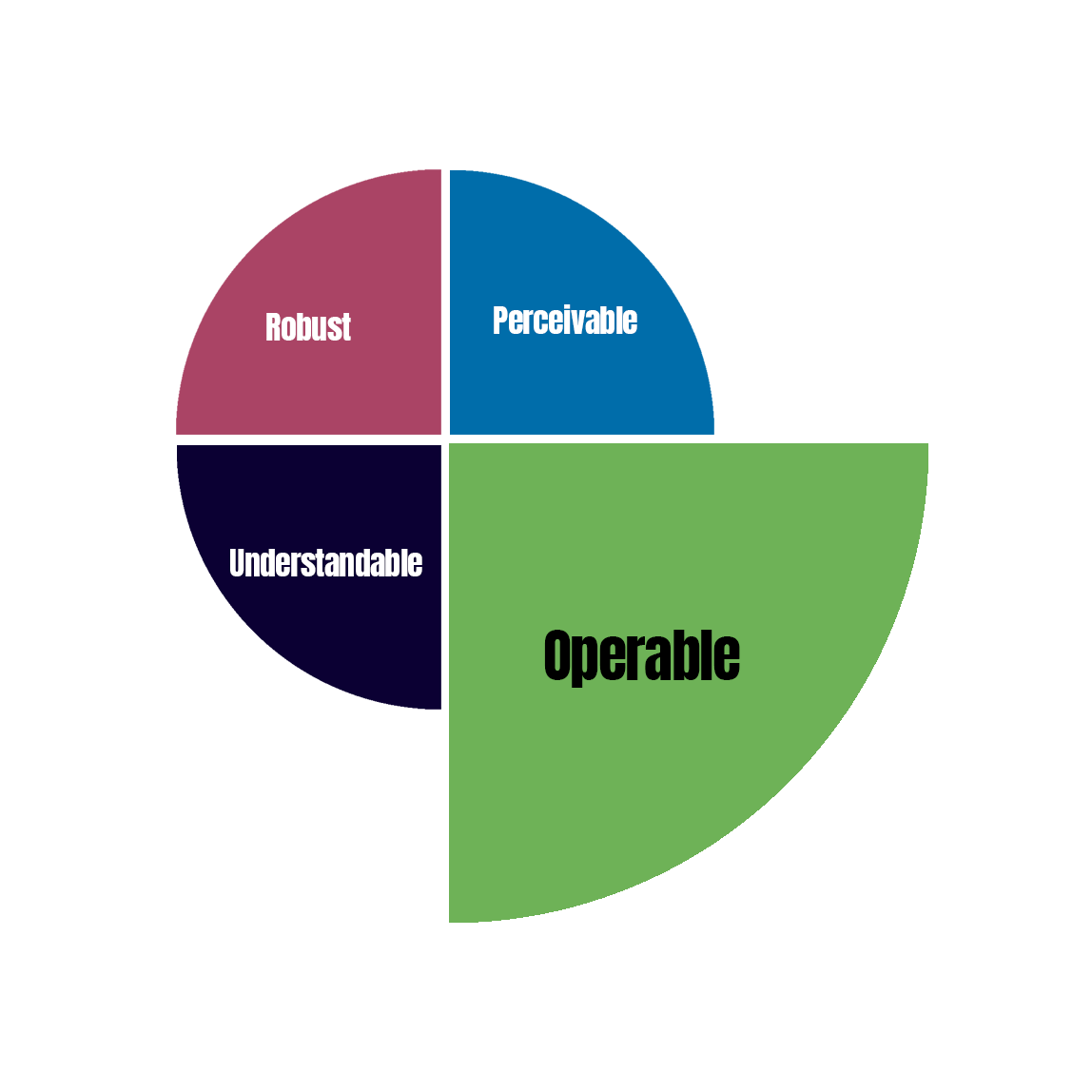
What is POUR?
The Web Content Accessibility Guidelines (WCAG) are the widely accepted standards that we follow to create an accessible website.
These guidelines have been created and standardized from four key principles:
- Perceivable
- Operable
- Understandable
- Robust
Let’s dig in a bit so we can demystify these.

Perceivable
When a website is perceivable, that means that everyone who accesses your website can understand and interact with all of the components on it.
For a website to be perceivable, we have to allow individuals with limited abilities or different uses of their senses to get the main content of your message and operate your website.
Making your website (and content) perceivable requires you to create alternatives for much of the content you’re creating.
How We Make Content Perceivable
- Provide captions or transcripts for audio/video content for deaf or hard-of-hearing users
- Provide ALT text or image descriptions for visually-impaired users
- Text can be read even without any styling

Operable
Have you ever tried to use and navigate your website without a mouse?
For a website to be operable, we have to make it easy for them to get around without hunting, searching, or having the same tools as you.
Some users might need to use specialized equipment to interact with the web. Can they interact with your website?
How We Make Content Operable
- Provide multiple ways to interact with a website
- Give them control over the timing of animation or slides
- Using semantic HTML in the code
- Do not use animations that could induce seizures or physical reactions
- And help users find and navigate through our content

Understandable
This one is just like it sounds – can everyone who lands on your website understand it? Not just the content, but how to get around it and the functionality of it should be understandable to everyone.
Everyone – no matter their abilities – should be able to get around your website, find the information they want, and understand the content on the pages.
How We Make Content Understandable
- Avoid overly technical jargon
- Write for a higher-secondary reading level
- Provide transcripts of video or audio files
- Design elements are consistent across all pages of your site
- Clear instructions for forms and visible form labels
- Easy-to-follow navigation structure

Robust
The fourth principle combines the previous three and then asks – can it work across multiple devices?
Your website needs to be useable by everyone, no matter what device they may carry in hand. That can mean ensuring that you’re future-proofing your website to work when big changes may come up, but also that it works for some of the older technologies.
How We Make Content Robust
- Write clean, compatible code
- Create responsive websites for maximum device compatibility
- Test across multiple browsers and device types